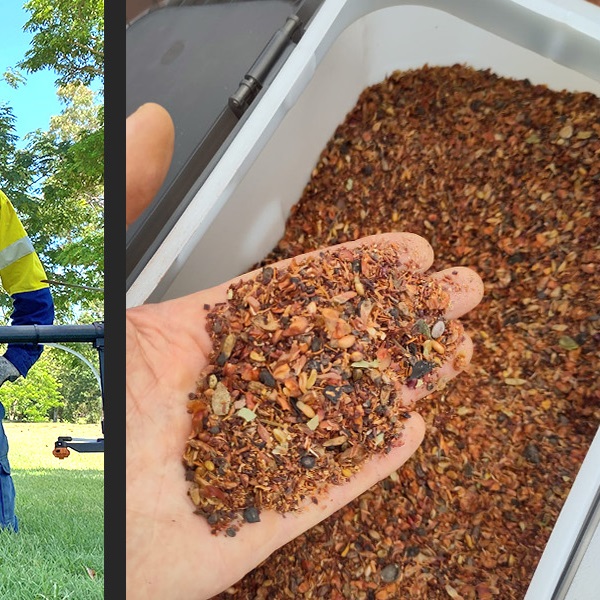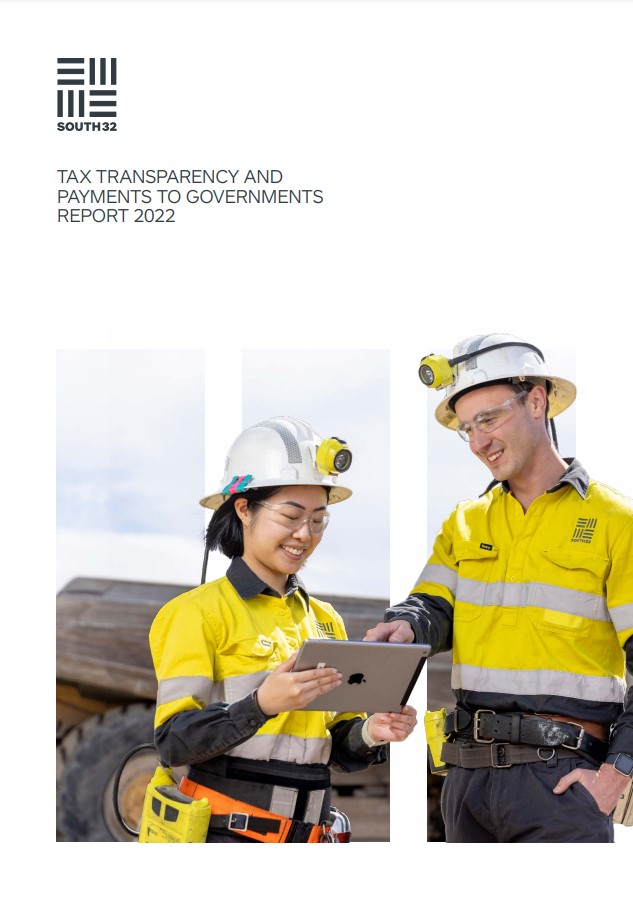
13 MARCH 2023
Have you ever wondered how seeds are planted over large areas?
From exploration through to the closure of our operations and beyond, the preservation and rehabilitation of the surrounding landscapes is front of mind. At our GEMCO manganese mine in the Northern Territory, Australia, rehabilitation commences as soon as possible after mining activities are completed, with soil backfilled and the area landscaped and prepared for revegetation.
Traditionally, seeding over large areas like those currently being rehabilitated at GEMCO is done using a helicopter. But now, an ambitious drone project is literally changing the landscape, particularly when it comes to safety.
Ben Neale, Supervisor Rehabilitation at GEMCO explains: “Previously, we used helicopters to distribute native seeds across areas being rehabilitated because this was the best technology available. But now drones have revolutionised how we do what we do.”
Together with a team of Indigenous employees with knowledge of local lands and vegetation, GEMCO rehabilitation specialists, engineers and programmers, two specially engineered drones were developed.
Now, the Rehabilitation team uses these drones to distribute seeds, and Ben said the benefits were significant.
“With helicopters, the safety risks were higher, particularly as pilots had to fly over seeding areas at low altitude while people on the ground acted as spotters to help direct them,” he said.
“Other risks like those associated with hot fuelling (refuelling while the helicopter is running), bad weather, and pilots trying to concentrate on flying the helicopter while also delivering the seed have also been eliminated,” he said.
In addition to the safety benefits, Ben said using drones had reduced the cost of seeding, and improved flexibility in the types of seeds the team could use.
“Helicopters are expensive to operate and less predictable in the results they produce,” he said.
“We can now also tweak our seed mix based on the areas we’re seeding instead of using a generic mix of seeds, and we don’t have to wait for helicopters to become available to get it done.”
Recently, the team used drones to plant around 46 million seeds over a programmed grid of 90 hectares of land, which took just three days.
With the potential for drones almost endless, this is only just the beginning.
Topics
